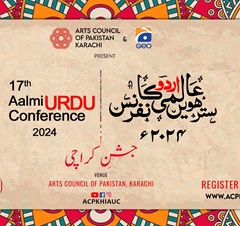Written by: Dr. Saba Noor
Posted on: May 14, 2020 |  | 中文
| 中文
The Ruins of Bhambore City
The Indus Delta is filled with ancient secrets of civilizations not known to people of the present day, but perhaps none as puzzling and exciting as the one strategically located at the mouth of River Indus. Bhambhore (or Bhanbore) is an ancient city located on the northern bank of Gharo Creek, about 65 km east of Karachi in the Thatta district. It lies on the N5 national highway between Dhabeji and Gharo, Sindh, some 50 minutes from the Thatta City. Much of the remains of the city paint an interesting yet mysterious story about the city and its inhabitants, but the artefacts and oral histories can help to uncover some of the secrets of it.
Activity in the city dates from 1st century BCE to the 13th Century AD, after which it was deserted, due to the change in the course of the Indus River. Archeological remains reveal the remnants of 3 distinct periods: The Scytho-Parthian era (1st century BC to 2nd century AD), the Hindu-Buddhist period (2nd century AD to 8th century AD), and the Islamic era which starts with Muhammad Bin Qasim’s supposed conquest of Bhambhore in 8th AD. While some speculate that Bhambore was the ancient city of Debal (derived from the Sanskrit word for, ‘Abode of god’) that Bin Qasim entered, others speculate that could have been the ancient Greek port of Barbaricon. Thus far, neither claims have been confirmed.
The citadel of Bhambhore was surrounded by a mud wall, and divided into eastern and western sections with a stone wall in the middle. Not only are there remains of houses, inns, and streets present, but also a stone palace, mosques, and Hindu temples. The eastern side holds some of the very first mosques of Asia, dated 727 AD, before Bin Qasim’s arrival in India. The northeastern side even holds remnants of a water tank, and an area for textile-making, glass-making, and metallurgy. As a port city, Bhambore derived most of its wealth by the trade of metal and ceramic goods. It was connected via trade routes to the rest of the Scytho-Parthian empire and the Indian Ocean.
Excavations of Bhambore began in 1928 by Professor Ramesh Chandra, followed by Dr. Leslie Alcock in 1951. The most fruitful period of excavation happened between 1958 and 1965 by Dr. F.A. Khan, the founder of Government of Pakistan’s Department of Archaeology. In 2004, the Department of Archaeology and Museums submitted a proposal to include Bhambore in the UNESCO heritage list, but its acceptance by UNESCO has yet to be confirmed. As of 2010, the property belonged to the Department of Culture of the Provincial Government of Sindh. By 2018, some 12,000 artifacts had been excavated. These include objects like terracotta, ceramics, coins, animal bones, but also irrigation networks and barrages.
Currently, besides the ruins of Bhambore, there is also a museum that was built in 1960, to showcase the relatively well-preserved artifacts from the different periods of its history. While it is not the most popular heritage destination, history enthusiasts still venture to the compound for a day of exciting and insightful lessons.
In terms of oral history, however, this city of mystery is linked to the romantic folktale of Sassi Punhun. This is a Sindhi-Baloch folktale, and one of the tragic romances recorded in Shah Abdul Latif Bhittai’s poetry. Sassi was allegedly the daughter of the Raja of Bhambore, who cast the infant into the River Indus due to a premonition that she was a curse. Sassi was adopted by a poor dhobi (washerman), who took her in as a blessing from God.
Tales of Sassi’s beauty reached Punhun, the handsome young prince from Kech Makran (located in present-day Balochistan). Traveling to Bhambore, he sent his clothes to Sassi's father, in the hope of catching a glimpse of Sassi. Both fell in love at first sight, though neither’s family approved of the match. Paunhun’s brothers pretended to participate in his wedding festivities and drugged him in order to take him away from Sassi.
Thinking she had been betrayed, Sassi ran barefoot towards Kech Makran, calling out to her beloved. As she stopped for water, a shepherd tried to force himself on Sassi. She ran away, and prayed to God to hide her; God split the land in two and buried Sassi in the valley of mountains (around Lasbela, Balochistan). When Punhun awoke, he ran to find Sassi, until he met the shepherd. After hearing his story, Punnhun made the same prayer to God as Sassi, and the valley split again in the same place, for Punhun to be reunited with his beloved.
There is still a great deal of excavation efforts that needs to be done in order to better understand the Bhambore civilization, especially where they resettled when the site was abandoned. But Bhambore offers an intriguing and multi-national link to civilizations that have been left to tales and legends. With gradual and careful excavation, Bhambore may no longer be an enigma, but a vital part of our understanding of Sindh’s regional history.
You may also like:

17th Aalmi (International) Urdu Conference, Jashn-e-Karachi: A Resounding Success
(December 10, 2024)